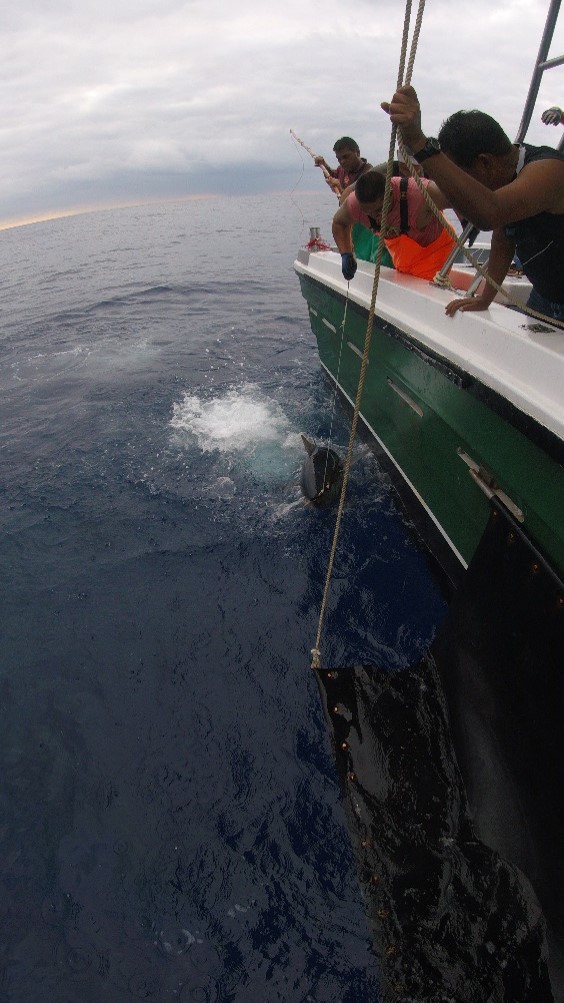On 12th December 2018, at 7am, a fish tagging team began fishing on the tuna grounds within St Helena, with the goal of tagging a number of yellowfin and bigeye tuna. The team, including staff from St Helena Government, Stanford University and the Blue Belt Programme, focussed on the area around Cardno Seamount to the far north of St Helena Island. Once fish were caught, satellite research tags were attached, and the fish were then released. In total, 14 satellite tags were released on 7 yellowfin tuna and 7 bigeye tuna.
These sophisticated tags then collected information about the tuna’s behaviour, including:
- daily position estimates
- vertical movement and,
- the temperature experience of the tunas in the area.
After a certain amount of time, the tags are designed to be released from the tuna. On their exterior, they include information on where to return them to for those that recover them, allowing the information to be collected and analysed.

To date, of the tuna released with satellite tags in St Helena waters in 2018, a number of tags have been recovered from local beaches and by fishermen.
One of the tags (Tag 83819) was attached to a bigeye tuna which was 132 cm (curved fork length) on 12th December 2018. After nearly 6 months of swimming around close to the area released, this bigeye tuna went too deep and the device popped off at a location not far from the release site. The tag then floated around the Atlantic until it washed up on Ogombo beach in Lagos Nigeria, where Peter Patrick found the tag and returned it in February 2022.
You can watch the track of the bigeye tuna below (we recommend watching full screen and in high resolution).
Another of the tags released in 2018 (Tag 83842) was attached to a yellowfin tuna which was 125 cm (curved fork length) on 10th December 2018. On 12th April 2019, this fish was recaught by the same vessel (FV Extractor) on the same grounds that it was released.
We were able to download the information from these tags, and the data shows where the tuna were and their behaviour whilst there. Both yellowfin tuna and bigeye tuna were in similar areas (close to the release area), but with very different behaviours. At night both yellowfin tuna and bigeye tuna were in surface waters (less than 50m), but during the day, the yellowfin tuna spent more time in warm surface waters (less than 100m), whilst the bigeye tuna spent more time in deep water (over 200m).
Why do we need to tag tuna around St Helena?
St Helena designated a Category VI sustainable use Marine Protected Area (MPA) in 2016. The St Helena Government, with assistance from the Blue Belt Programme, actively monitors the populations of key marine species within the MPA – such as yellowfin and bigeye tuna – to better inform its management. This allows them to help ensure fish stocks remain at sustainable levels, while also learning more about the behaviour of these incredible fish.
Tagging fish provides a really effective way of doing this. The data collected from the satellite tags can provide a range of information that is used for the provision of management advice for the fish stocks within the St Helena fishery, these include: growth rates, spatial and seasonal movement, rates of exchange between areas, behaviour and estimates of biomass for the assessment of population dynamics and exploitation rates (how big the population is and how much can be taken). Using this information, the St Helena Government will continue to work with fishers and the local community to build a more detailed understanding of the tuna populations available within St Helena’s MPA, and ensure these stocks are managed in a sustainable way.